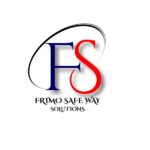Chamas, often referred to as savings circles or investment groups, are common in Kenya as a way for people to pool their money, resources, and investments. It’s crucial to comprehend the registration procedure if you’re thinking about founding or joining a chama. This blog post will walk you through the process of registering a chama in Kenya so you may start your road toward mutual financial success and community support.
Define Chama’s Structure and Purpose
Outline the chama’s goals in the beginning, whether they are geared towards entrepreneurship, social support, savings, or investment. Establish the membership requirements, including the number of members, the eligibility standards, and the amount of the contributions. Furthermore, choose the legal form that the chama will take, such as an unincorporated association, a limited liability company, or a cooperative society.
Recruit Members: Make contact with people who are eager to join the chama and who share your vision. Personal networks, social media, community groups, and workplace interactions can all be used for this. Make sure prospective members are aware of the chama’s goals, requirements, and advantages.
Hold a First Meeting: Arrange a first meeting with interested parties to go over the goals, structure, and specifics of the chama. Establish roles and responsibilities, contribution amounts and frequency, and the decision-making procedure at this meeting. To formalize the chama’s norms and regulations, a written constitution or bylaws are advised.
Establish a Bank Account: Open a special bank account for the Chama with a trustworthy financial institution. Collect the necessary papers, such as the chama’s bylaws, membership identity cards, and proof of address. To provide financial transparency and accountability, make sure the account is opened in the champ’s name and that several signatures have been assigned to authorize transactions.
Obtain a Personal Identification Number (PIN) for the Chama and a Tax Compliance Certificate by going to the Kenya Revenue Authority (KRA) office. For financial transactions and tax compliance, the PIN is necessary. Once the Chama is running, make sure to maintain regular records and take care of any legal tax responsibilities. To prove that the chama complies with tax laws, obtain a Tax Compliance Certificate.
Set up appropriate reporting and accounting systems:
Keep thorough financial records, including those for contributions, contributions, and investments. Establish a trustworthy accounting system, and designate a treasurer or finance committee in charge of handling finances and reporting. Inform the chama members of financial matters regularly to ensure accountability and transparency.
How chamas and merry-go-rounds can generate income
In many cultures and societies, informal financial systems like chamas and merry-go-rounds have been utilized to pool funds and support people financially. Despite not producing income in the conventional sense, they can aid members in saving money, gaining access to credit, and achieving financial security. Here is how they function:
Chamas and merry-go-rounds include a group of people who donate a set sum of money regularly, such as once a week or once a month. These donations are gathered and placed in a pooled account.
Rotating Funds: The group then distributes the combined funds in a rotating fashion to one member. For instance, if there are ten participants, the pooled sum will be distributed evenly among them once every ten weeks (or months).
Loans and Credit: Members may borrow money from the collective fund in addition to saving money. Members who require immediate access to money without using official financial institutions that might charge higher interest rates may find this to be especially useful.
Interest and Penalties: Some chamas and merry-go-rounds charge interest or penalties on the loans or contributions, which can encourage timely repayments or dissuade irregular contributions.
Investments: Depending on the group’s objectives and agreement, the funds may be used to fund income-producing projects like start-up companies or investment opportunities.
It’s critical to remember that these informal institutions heavily rely on member trust and openness. As a result, they usually develop among groups of individuals who already know and trust each other, such as friends, relatives, or coworkers.
Although chamas and merry-go-rounds don’t provide income on their own, they enable financial empowerment and cooperation among their users, assisting them in meeting a variety of needs and achieving their objectives
To form a chama in Kenya, one must carefully prepare, specify goals, assemble possible members, open a special bank account, get a PIN and Tax Compliance Certificate, and perhaps register as a cooperative organization. You can get these services at frimor safe way solutions. These actions will help you create a formal framework for your Chama that will promote accountability, trust, and financial growth among all members. Remember that your chama’s success and survival depend on clear communication, accurate documentation, and adherence to legal and financial requirements.








